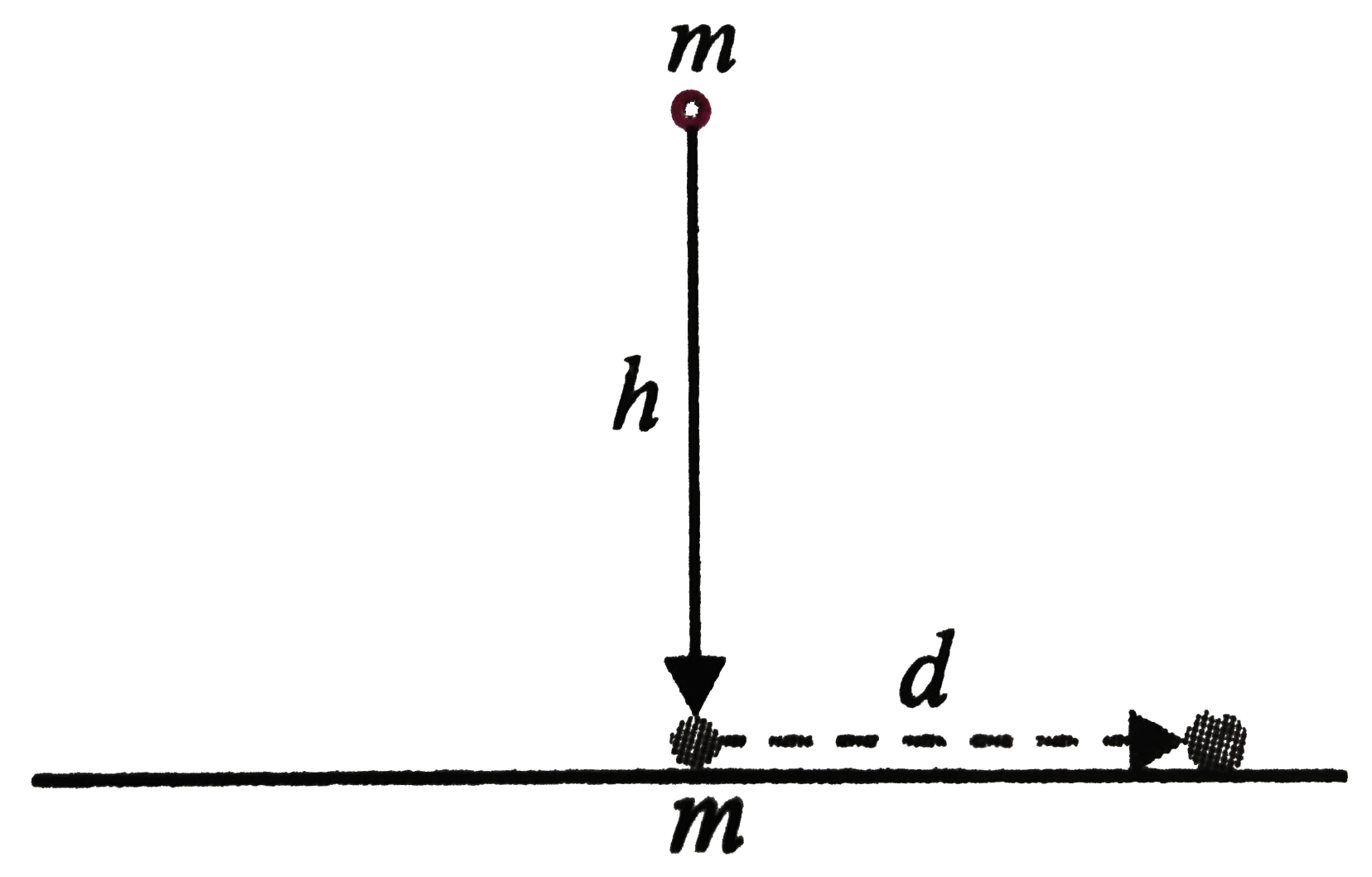A body of mass m falls from a height h and collides with another body of same mass at rest. After collision, the two bodies combine and move through distance (d) till they come to rest. Find the work done against the resistive force.
Refer to Figure, Here, m1=m,υ1=√2gh
m2=m,υ2=0
If υ is the combined velocity after collision, using the principle of conservation of linear momentum,
m1υ1+m2υ2=(m1+m2)υ
m√2gh+0=2mυ
υ=√gh2 ...(i)
Work done against resistive forces
= energy lost by the combination of bodies
=12(2m)υ2=m⎛⎝√gh2⎞⎠2=mgh2

Topper's Solved these Questions
- WORK, ENERGY AND POWERBOOK - PRADEEPCHAPTER - WORK, ENERGY AND POWEREXERCISE - NCERT( Multiple choide questions-1)
21 Videos
- WORK, ENERGY AND POWERBOOK - PRADEEPCHAPTER - WORK, ENERGY AND POWEREXERCISE - JEE (Main and Advanced)
82 Videos
- WORK, ENERGY AND POWERBOOK - PRADEEPCHAPTER - WORK, ENERGY AND POWEREXERCISE - Fill in the blanks
10 Videos
- THERMODYNAMICSBOOK - PRADEEPCHAPTER - THERMODYNAMICSEXERCISE - Assertion- Reason Type Questions
19 Videos
Similar Questions
A body of mass m moving with velocity 3km/h collides with a body of mass 2m at rest. Now, the coalesced mass starts to move with a velocity
View SolutionA body of mass M moves with velocity v and collides elasticity with another body of mass m(M>>m) at rest , then the velocity of the body of mass m is
View Solution
Knowledge Check
A body of mass m falls from a height h and collides with another body of same mass at rest. After collision, the two bodies combine and move through distance (d) till they come to rest. Find the work done against the resistive force.
A12mg(h+2d)B12mg(h+4d)C12mg(h−d)D12mg(h−2d)A body of mass M moves with velocity v and collides elasticity with another body of mass m(M>>m) at rest , then the velocity of the body of mass m is
AvB2vCv/2DZeroA body of mass m moving with velocity 4 km/h collides with a body of mass 3 m at rest. Now the coalesced mass starts to move with a velocity of:
A4 km/hB43km/hC1 km/hD2 km/h
A body moving with a certain speed collide with another body of finite mass kept at rest . Which of the following is/are possible ?
View SolutionBody A of mass 4m moving with speed u collides with another body B of mass 2m at rest the collision is head on and elastic in nature. After the collision the fraction of energy lost by colliding body A is :
View SolutionBody A of mass 4m moving with speed u collides with another body B of mass 2m at rest, the collision is head on and elastic in nature. After the collision the fraction of energy lost by colliding body A is :
View SolutionBody A of mass 4 m moving with speed u collides with another body B of mass 2m, at rest. The collision is head on and elastic in nature. After the collision the fraction of energy lost by the colliding body A is
View SolutionA body of mass 5 kg moving with a velocity 10 m/s collides with another body of the mass 20 kg at rest, and comes to rest. The velocity of the second body due to collision is
View Solution
